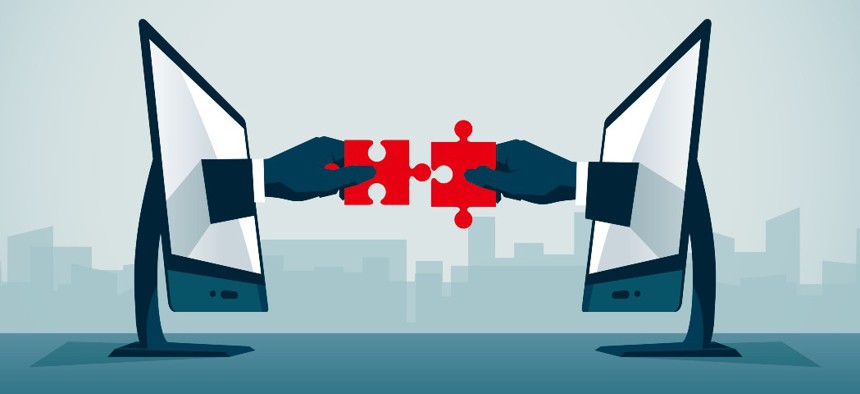Energy Department Plans to Release Guide to Scaling IT Modernization

erhui1979/Getty Images
The agency has found success in taking small steps to deploying large-scale changes.
Digital transformation at an agency-wide level has challenged executives, especially amid the ongoing COVID-19 pandemic.
But one official from the Department of Energy believes their agency has a method to scale IT modernization in a way that is applicable across the government.
“We need to continue our focus on changing our cultures to embrace modern development technologies,” Ann Dunkin, chief information officer at the Department of Energy, said during a panel discussion on digital transformation. She added that Energy is in the process of building a manual on how to scale modernization efforts, which Dunkin hopes can be applied across the federal government.
“At the DOE, we’re building our playbook of…how to scale modernization across a department agency, and we want to share that as we get built, we'll share it across the government,” she said. “So hopefully, we can do this. Not only at the DOE, but across federal government.”
Included in this forthcoming playbook are best practices for building local platforms, a DevSecOps pipeline, and adhering to ATO processes.
“We really need to take those pockets of modern practices and tools and scale them out across our departments and agencies,” Dunkin said. She added that since the years 2014 and 2015, Energy has cultivated smaller projects of digital transformation in its broader IT modernization process.
This management tactic helps encourage sustained digital transformation while creating a culture among agency staff that supports modernization efforts.
Jamie Holcombe, the chief information officer at the US Patent and Trademark Office, agreed and said his office took a similar approach in modernizing. He focused on ensuring federal employees felt enthusiastic using the new technology in daily operations.
“The thing is, you take different examples, and you slowly build up momentum, where you get a whole culture of ‘Wait a second, that can work that can change,’ but you have to show it in small increments such that you get that following,” he explained. Holcombe said that his organization is roughly 60 percent finished with its modernization efforts, and is focusing on product management that encourages employees at the USPTO to act as stakeholders in digital transformation.
These modernization efforts are likely going to be crucial in the future as agencies continue reckoning with remote work and new cybersecurity requirements. At the USPTO, Holcombe said employees were able to transition into remote operations relatively seamlessly thanks to prior telework infrastructure.
Given that roughly 80% of USPTO staff had been included in a telework program prior to COVID, it wasn’t too challenging to add over 6,000 support workers to the office’s VPN.
“The fact of the matter is, we're really accustomed to it, the thing that we depended upon was the fact that we could scale that example, we could scale that foundation that we had,” he said.
Dunkin noted that Energy’s future modernization efforts will also have to “refocus what we need to do in terms of serving internal collaboration, and how our employees work together, because we really demonstrate people can be effective at home.”






